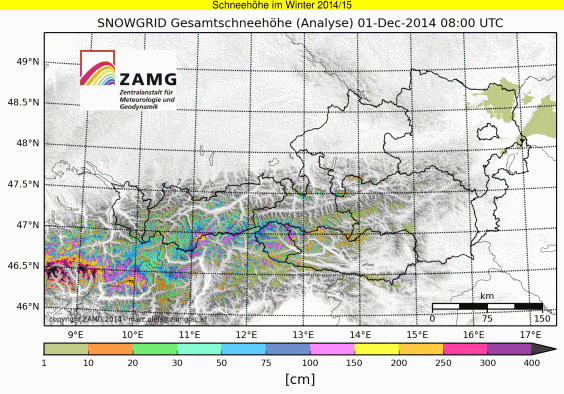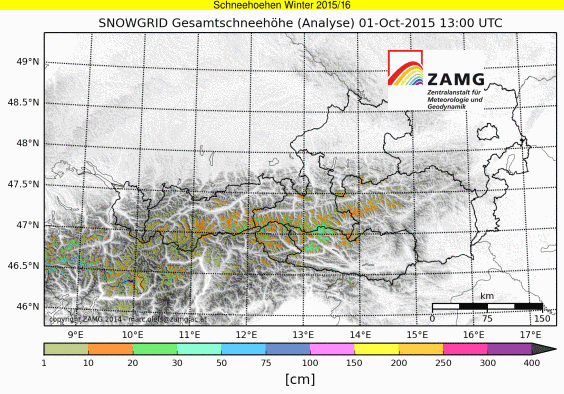What is SnowGrid?
SNOWGRID is a snowpack model, i.e. a program that uses measured data on snow and weather and the laws of physics to calculate how the snowpack changes. There are complex models that precisely reproduce the layer structure of the snowpack - including density, snow temperature, microstructure of the layers, etc. - for a specific point. However, this is very computationally complex and requires many different input parameters that are not measured at all weather stations and are therefore only available for certain locations.
SNOWGRID is a comparatively simple model that only knows two layers: the uppermost, newest layer and the old snow cover below it. In return, the computational effort is significantly lower and you don't have to measure so many different parameters. SNOWGRID can therefore be used over a large area, or for so many different points that a map is created.
The SNOWGRID domain (the spatial section covered) comprises a rectangle roughly the size of Zurich-Bratislava and Nuremberg-Trieste, or around 28 million data points. The spatial resolution is therefore 100m.
Here you can find the PowderGuide.com SNOWGRID maps: http://www.powderguide.com/wetter/snowgrid.html









